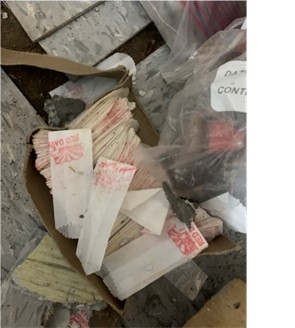
New York State Comptroller Thomas P. DiNapoli today released a report examining demographic, economic and quality of living trends in 10 rural counties in New York state. Most of the counties had population losses, aging residents, a shrinking labor force, as well as challenges with housing availability and access to health care, food and broadband. The counties selected as representative of rural New York include Allegany, Chenango, Delaware, Essex, Greene, Hamilton, Lewis, Schuyler, Sullivan, and Wyoming.
“New York’s rural areas have vibrant histories and vast potential, but they often face obstacles which amplify one another,” DiNapoli said. “Demographic and other changes pose difficulties for local and state officials as they look for policies to boost communities and increase connectivity and access to health care and other services. Yet the shift in remote work and migration from urban areas could offer opportunities for rural communities to grow and thrive.”
Comparison to New York State
Between 2011 and 2021 the population of the state grew by 4.2%, gaining 812,297 people, but the rural counties examined decreased by 13,876, a loss of 3.4%. The state’s median age rose from 37.8 years old to 39.2 years old, an increase of 3.7%, but in these rural counties, the median age increased from 43 to 45.8, or 6.5%.
From 2012 to 2022 New York’s labor force grew by 14,390 workers and added 430,738 jobs. Over the same period, the 10 rural counties’ labor force shrunk by 13,707 workers and lost 2,580 jobs. While the average unemployment rate of these rural counties was lower (3.7%) in 2022 than the state average (4.3%), the average labor force participation rate of these rural counties in 2021 was 55.9%, well below the state’s rate of 63.1%.
Similar to the rest of the state, educational services, health care and social assistance industries employ the highest share of the 10 rural counties’ workforces. A larger portion of these counties’ workforces (20.1%) is employed by the government than statewide (16%). In Hamilton County, 30% are employed by government – a higher percentage than Albany County (25%) the seat of state government.
DiNapoli’s report identifies additional challenges faced by rural New York communities, including:
- Declining Housing Units and High Vacancy Rates: In 2021, the 10 rural counties had 5,510 fewer housing units than in 2016, a decrease of 2.3% compared to the overall 3.1% increase of housing units statewide. Additionally, 32.5% of housing units in the rural counties in 2021 were vacant compared to 10.9% statewide. This is largely because of second homes and vacation properties, which may be used as short-term rentals. Both declining housing stock and high rates of second homes and vacation properties have the potential to increase housing costs in rural areas.
- Access to Health Care and Food: All of the counties examined have areas designated by the U.S. Health Resources and Services Administration as having a lack of access to primary care services. Continuing to operate emergency medical services in rural New York can be difficult. Rural counties have also been impacted by the opioid epidemic similarly to the rest of the state but have fewer treatment options available without traveling large distances. Of the 56 crisis programs in New York, there is only one in a rural county (Sullivan), and it has capacity for just six people. In addition, 36,248 people in the rural counties live in food deserts. Due to the distances involved, and few public transportation options, older New Yorkers face even more challenges accessing health care and food. Delaware County has the most acute shortage of the rural counties, with a population to health professional ratio of 30,188 to 1 for the Medicaid eligible population of the county.
- Lower Rates of Broadband Service: As DiNapoli reported in 2021, the state has made great strides in deploying broadband. While access to broadband has improved, 10.3% of addresses in the 10 rural counties remain unserved, with rates as high as 28.4% in Hamilton and 26.6% in Lewis. This compares to just 2.5% statewide. Those still left unserved are among the most challenging to reach, and frequently the only available internet providers utilize satellites for the downloads, and a dial-up connection for the uploads, making now common tasks difficult. With availability of broadband internet access lagging the rest of the state, it limits the ability to access telehealth, telecommute or complete online education.
Policy Approaches
Many of the issues faced by rural New Yorkers mirror those faced in more urban areas, but the solutions may significantly differ. Increasingly, public policies are being developed for the unique challenges of rural areas. There are new federal programs offering funding specific to rural communities including the $20 billion Rural Digital Opportunity Fund to spur broadband deployment and the Rural Partners Network intended to help rural governments better identify and access federal funding streams.
Improvements to broadband service supplement in-person delivery of services through telehealth, online education and telecommuting. Under the federal Broadband Equity, Access and Deployment Program (BEAD), the state must submit a five-year action plan to serve as a comprehensive broadband needs assessment and to outline key strategies, state and federal resources available, and potential barriers to successful implementation. The plan is due in September 2023. This federal funding should help level the playing field for rural areas and provide an infrastructure backbone that can address other challenges.
At the state level, programs where funding is targeted to rural communities include $100 million focused on revitalizing New York’s downtown communities, $21.7 million in rural rental assistance, and $9.4 million to expand access to rural health programs and networks.
DiNapoli’s report found that the state can do more to leverage the local strengths of rural areas, particularly with respect to outdoor recreation, including enhancing efforts to bolster tourism and support agrotourism and farmers. Technology and continuing education programs can also be used to bolster rural economies by creating more ecommerce opportunities or to supplement the market available for existing retail and wholesale businesses.
The criteria used to select the 10 rural counties include: classification by the U.S. Census Bureau as “unaffiliated” and not part of a Census-defined statistical area; having no city with a population of over 10,000 people; and defined by the U.S. Office of Management and Budget as non-metro counties.
“County leaders appreciate State Comptroller DiNapoli’s focus on the challenges facing rural New York communities. Every level of government in the state of New York needs to recognize these challenges and begin making data-driven decisions that make it easier and more affordable for families and businesses to thrive and invest in our rural communities. That means expanding access to broadband, making smart economic development investments, and reducing the burden of unfunded and unnecessary state mandates that drive up the cost of living,” said Stephen J. Acquario, executive director of the New York State Association of Counties (NYSAC). “In 2007, NYSAC began raising a red flag expressing concerns in a report called “The Population Shuffle,” and data from the past two censuses is stark. Across many counties in New York, we continue to see a loss in overall population, with a significant decrease in younger New Yorkers and increases in more mature New Yorkers. Lawmakers in Albany should consider policy and budget decisions to leverage the opportunities we have in our most rural communities.”
Report
Rural New York: Challenges and Opportunities
Related Reports
Availability, Access, and Affordability: Understanding Broadband Challenges in New York State
Continuing Crisis: Overdose Deaths in New York
New Yorkers in Need: Food Insecurity and Nutritional Assistance Programs
New Yorkers In Need: A Look at Poverty Trends in New York State For The Last Decade




















